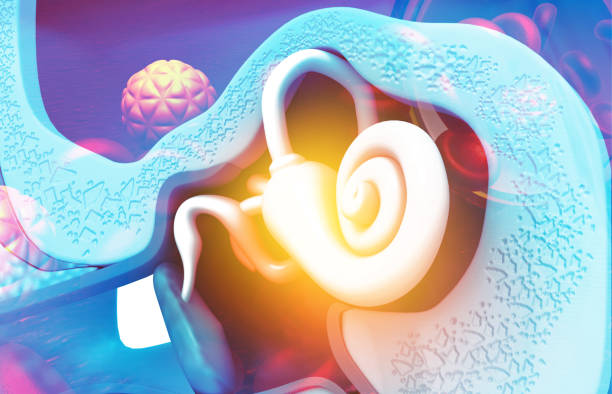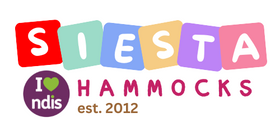The development of a child can be fostered and enhanced with the use of a therapy pod. These pods focus specifically on improving sensory processing, making them particularly beneficial for children with sensory issues, Sensory Processing Disorder (SPD), Attention Deficit Hyperactivity Disorder (ADHD), or autism. They can aid in de-stressing children or helping them attain desired sensations.
Children enjoy using the Pod swing due to its inviting nature. It also provides a hideaway for kids when they feel overstimulated or need a break. Although thepod swing doesn't allow for laying down, it can be pushed or spun around. An added advantage is that a pod swing can promote engagement by sparking a child's imagination. For instance, with a pod swing, children can envision themselves embarking on a thrilling journey aboard a giant blue whaleboat, battling scary sea creatures. You can place the pod swing either indoors or outdoors.
VESTIBULAR SENSE

While most people are aware of the five senses, most parents are unaware of the vestibular sense, which is the perception of movement. A child's vestibular sense tells them where they are in space, whether they are moving, how fast they're going, and which way they travel. If you have read our page on vestibular input, you are aware of the significance of this sense to a person's overall development. Children's bodies and brains grow from the motions they experience even when they are still in the womb!
The fluid in your ear canals moves when you move, activating vestibular receptors in your inner ear. These sensors tell your body of your location in space so that you can move through your surroundings safely. It makes it possible for your brain to recognise changes in head position and determine whether you move in harmony with or against gravity.
Vestibular information plays a role in the growth of muscle tone, postural security, righting reactions, balance, eye movements, and general awareness from infancy through adulthood. You might notice issues in any of these areas, worry about your kid's safety around playground equipment, or detect a general rejection of movement-based activities if your kid has vestibular processing disorder.

WHAT ARE THERAPY POD SWINGS?
Although sensory swings exist in various sizes and forms, each has a specific function. Although they have been used in therapy by occupational therapists for many years, they have recently been widely accessible (and far more affordable) for families to utilize in their own homes.
However, since your vestibular system receives so much sensory information whenever you ride a swing, practically every swing qualifies as a sensory swing.
Occupational therapists have taught the body and mind to cooperate through autism sensory swings for many years. They give your infant proprioceptive and vestibular stimulation, which awakens their senses.
Filtering and organising sensory data is difficult for kids with sensory processing disorder (SPD). The neurological system is stressed by this information overload, leading to sensory breakdowns. The body's "fight or flight" reaction is calmed by sensory input, such as snuggling and swinging. By calming their overstimulated senses, sensory swings help your child feel secure.
The most crucial sensation in the body is the vestibular system. It's so because the body's precise location of other objects is known to our brain. It tells us whether we're moving, how quickly we're travelling, and which way we're moving. We can traverse our environment thanks to a developed vestibular system confidently.
An improvement in balance and coordination is another advantage of sensory swings. Children's bodies cannot navigate their surroundings when they have difficulty digesting vestibular input.
Your child will learn that their body is safe even when their feet are off the ground as they sway on their sensory swing. These associations balance out more as they grow stronger.
The brain is organised by the swinging action and Deep Pressure Therapy. It receives some much-needed relaxation from its overworked nervous system as a result. What then is the advantage? Children with autism feel more "balanced" thanks to sensory fluctuations. As a result, many parents discover that hanging out before or during homework helps kids focus.
Effects of sensory swings are innumerable and include everything from extending attention span to enhancing coordination.
THERAPY POD SWINGS FOR VESTIBULAR INPUT

You have probably seen your occupational therapist use a therapeutic swing for various activities if your kid receives occupational therapy services in a sensory clinic setting! Consider purchasing an indoor sensory swing to help develop your child's sensory skills at home.
A therapy or sensory swing should ideally permit linear and circular movement (in all directions) (back and forth, side to side). Some swings feature a vertical part that lets you bounce up and down while swinging! The movement that best meets your child's unique vestibular needs should be discussed with your child's occupational therapist.
BENEFITS OF THERAPY POD SENSORY SWINGS
- The vestibular sense influences safety, body awareness, balance, muscular tone, and coordination. Different sensory swings can target particular vestibular receptors through their movement pattern.
- Balance, core strength, motor skills, and righting reactions can all be tested depending on the swing you select.
- Timing, corrective reflexes, and visual-motor skills can all be improved by throwing objects at the target while swinging. Children can develop these abilities in highly entertaining and calming ways by using sensory swings in various therapeutic activities. For instance, a platform-style swing makes it difficult to maintain balance while seated. The trapeze-style swing can aid in strengthening the upper body, and you can test your timing abilities by including a crash pad.
- Other swings exist that support integrated vestibular input.
- Swinging for 15 minutes can positively affect the brain that lingers for 6–8 hours. You can speak with your occupational therapist to learn how to supervise and incorporate spinning for your kids in small doses.
- Children who overreact or underreact to vestibular stimuli may need the variety of movement possibilities provided by sensory swings. The ability to meet specific movements may vary depending on the sensory swing type you select; for instance, rotational swinging and upside-down movement are highly severe. Some more tolerable vestibular inputs include bouncing, hopping, and other similar linear activities. Arrhythmic, erratic swinging can be alarming, but rhythmic, predictable swinging might encourage organisation and tranquility.
- Because the vestibular and visual systems are interconnected, problems with either system's processing can frequently be seen. The pod swing, which you may use with or without vision, is the ideal sensory swing. By allowing youngsters to eliminate visual feedback and immerse themselves in the swing or use their optical system to view while moving, sensory swings can support the development and challenge the functional use of vision.
- These swings can enhance children's planning of sensory diets for self-regulation. There is always a sensory swing available to help meet your child's requirements, whether the goal is to alert and stimulate or quiet and reorganise.
HOW TO USE A THERAPY POD SWING

You've probably seen social media advertisements for sensory swings that promise to calm kids and stop their tantrums instantly. The sensory swing will cause youngsters sensitive to movement to stress out. Therefore, this isn't true.
- The parent must work to get over their child's sensory sensitivity.
- Never push your kids onto the swing; doing so could exacerbate their sensory processing issues and increase their level of terror.
- Exercise caution when whirling the infant on the swing because this sensory input is highly potent. Even though they enjoy spinning, some kids may vomit, which indicates that their vestibular system is overworked.
As a result, you should either avoid from spinning your child on the swing and instead allow them to do it themselves or spin them only briefly. Spin them in the opposite direction after that to balance their system.
OTHER TYPES OF SENSORY SWINGS
Stretchy Swings
This swing is ideal if your child enjoys giving and receiving huge hugs, wearing little clothing, and crawling in confined places. Stretchy cloth on this kind of swing will aid in enclosing the infant. In addition to being able to swing in it, your child will experience several proprioceptive sensations that are soothing and vestibular stimulation from the fabric pressing on their body. The youngster has a place to withdraw to and escape overpowering stimuli outside, including bright lights, with the help of the adaptable stretchable swing. The kid can sit, lay down, and stand in the swing. Additionally, they can gather it under their arms and hold it in their hands.
Skateboard Swing
You may hang the Skateboard Swing from a tree or a swing set for a fantastic outside choice. On this enjoyable and simple to use sensory swing set, your youngster can pretend to be taking off towards space or surfing a large wave. The obstacles presented by this kind of swing can help the child's coordination, balance, motor planning, and core strength. Youngsters who are three years old or older are advised to use it.
Mesh Swing
The child has a variety of alternatives with the mesh swing or the net-style swing. You may either spread the mesh out entirely so your child can lie down on it or just a little so it sits like a seat. Children older than three years old will love the swing.
Flying Saucer Swing
The big saucer swing has begun to become a household favourite. Although you can use this swing indoors, it is typically made to hang from a tree. Kids like lying down, sitting, or standing on the swing and absorbing sensory information.
Hammock Chair Swing
Your child might enjoy the hammock swing's inexpensive indoor and outdoor option because it is so soothing. This swing is ideal for kids who want to feel secure when swinging but yet want to be aware of their surroundings. The sides of the swing will provide them with that assurance. Kids who enjoy relaxing with gentle sways will love it.
Platform Swing
Every clinic for occupational therapy has a platform swing. Based on its size, the platform swing can accommodate many children, though it is often recommended for kids five years old and older. It's because having the sturdy support underneath enables small toddlers to lay down on their stomachs without discomfort. While the child is in this position, a sensory integration therapy technique involves swinging back and forth.
Encourage children to lay down on the platform on their tummies by placing beanbags or cuddly animals on the floor beneath them. When they swing through, urge them to bend over and grab the stuffed animals, and while they are still in this posture, toss them into a target. Never force them to do this, though, since some youngsters might feel comfier initially sitting on the platform and may eventually build up to lying down. Children's diverse processing abilities are encouraged by this. Children who are frequently very busy may also find it incredibly calming.
Disc Swing
The disc swing is a fantastic alternative for kids three and older since it presents many obstacles and improves their grip, core strength, and motor planning. With a little more hardware, you can hang this inside your house and on a tree or outside swing. This swing is ideal for kids who love movement and are always eager for experiences. However, if a kid is sensitive to movement, it would not be a smart alternative.
THERAPY POD SWING CHAIRS FINAL TAKEAWAYS
From birth through adulthood, the vestibular system aids in developing your body awareness, coordination, balance, and visual abilities. Some kids don't properly interpret this sensory information. Thus, they need therapeutic guidance to understand how things move. An excellently practical and entertaining addition to your home's sensory toolkit is a therapeutic sensory swing. Finding a spare doorway, assembling a pop-up tripod platform, or asking a helpful friend to drill into a ceiling beam can all be done quickly and easily to install a sensory swing in your house.
Check out Siesta Hammocks for more information about installing swings. You can select a sensory swing that satisfies your child's specific demands for vestibular stimulation or a mix of sensory systems to encourage regulation with the help of your child's occupational therapist.



Leave a comment